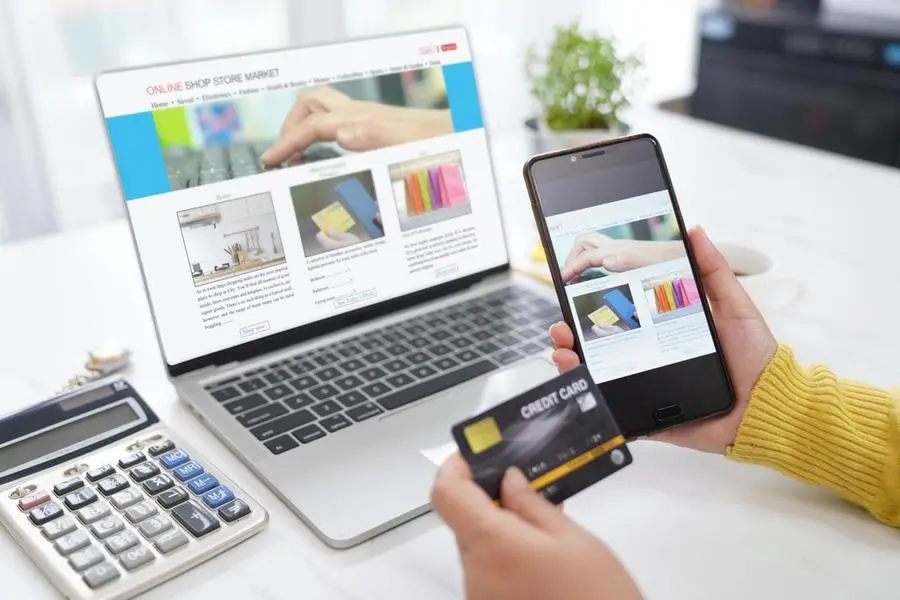PHOTO
Image used for illustrative purpose. Online shopping woman used computer laptop searching shop on e-commerce website and using smartphone to payment on digital payment online gateway by credit card.
When retailers were creating an online presence, they initially excluded low-income consumers on the basis of a number of assumptions. First, these consumers were assumed to have limited access to resources; and second, retailers also assumed that delivering items to low-income consumers was difficult, given where they lived.
Historically, low-income consumers were content to purchase their products in a physical (‘brick-and-mortar’) store. However, as they became more accustomed to using the internet, their expectations changed (Gao and Su, 2017). During the Covid-19 pandemic, consumers had restricted access to traditional brick-and-mortar stores (Kibucha, 2021) and online shopping increased. The low-income segment is now growing rapidly and has become an important market for retailers to understand better.
A recent research report by the W&R Seta Leadership Chair: Gauteng revealed several important insights into low-income consumers’ online shopping behaviour and needs, which are highlighted below.
Travel costs
Travel costs are a major consideration for low-income consumers. These customers often have to travel long distances in order to purchase the items they want/need and, as they typically don’t have their own transport, they sometimes use Ubers to take them home when they have made a substantial purchase.
Travel costs can also be a major frustration, such as when these consumers travel to a retailer, only to discover that the retailer does not have sufficient available stock.
As the cost of transportation increases further, online shopping is regarded as an appropriate alternative to visiting physical stores; and so, this is a driving factor to engage in online shopping. According to the research, quite a few participants specifically stated that online shopping was more cost-effective in respect of travel (referring to taking an Uber vs paying for delivery).
Convenience drives online shopping
Consumers often prefer online shopping because of the convenience associated with it, but convenience is especially highly valued among low-income consumers.
They have limited time, they are sometimes unable to go to the stores, they work long hours, the travel time to stores is often long (because the stores are far away), they want to avoid queues and overcrowded areas, they don’t want to go to a mall, they might have a baby, or weather conditions might not be ideal. These are some of the factors that make online shopping an attractive option. A focus on communicating the convenience of online shopping can therefore be an efficient way to motivate more online shopping among this segment.
Product type
These consumers still prefer to buy certain product types in-store. These include perishable items such food that doesn’t stay fresh for very long (veggies, fruits, meats), cosmetics, and over-the-counter medication.
Most respondents said that they were not willing to buy these products online. One commented that s/he would purchase medication online if the returns policy were simple and easy to use; while in relation to cosmetics (such as make-up), participants wanted to feel and see the textures and to test the colours of products on themselves.
Regarding fresh food such as vegetables and meats, respondents feared that the goods might go off or rot during transportation, or that they might be damaged because of a delayed delivery, or that the delivery process itself would damage them. They also expressed the need to see and select the fresh items they wanted or needed in person, and not trust a store attendant to select the correct or best fresh options on their behalf.
Brick-and-mortar and online
Some consumers prefer to inspect, touch, and feel products before purchase. Others consider the selling price, the product’s quality, and the retailer’s return policy. When comparing brick-and-mortar stores with online shopping, the low-income consumers sampled in the research preferred to receive their information in the brick-and-mortar store first, and only then to order the product online.
An element of showrooming therefore takes place with this segment. Specifically, their familiarity with brick-and-mortar stores seems to drive their confidence to shop online. The physical store therefore plays an important role in supporting the move to online.
All rights reserved. © 2022. Bizcommunity.com Provided by SyndiGate Media Inc. (Syndigate.info).





















